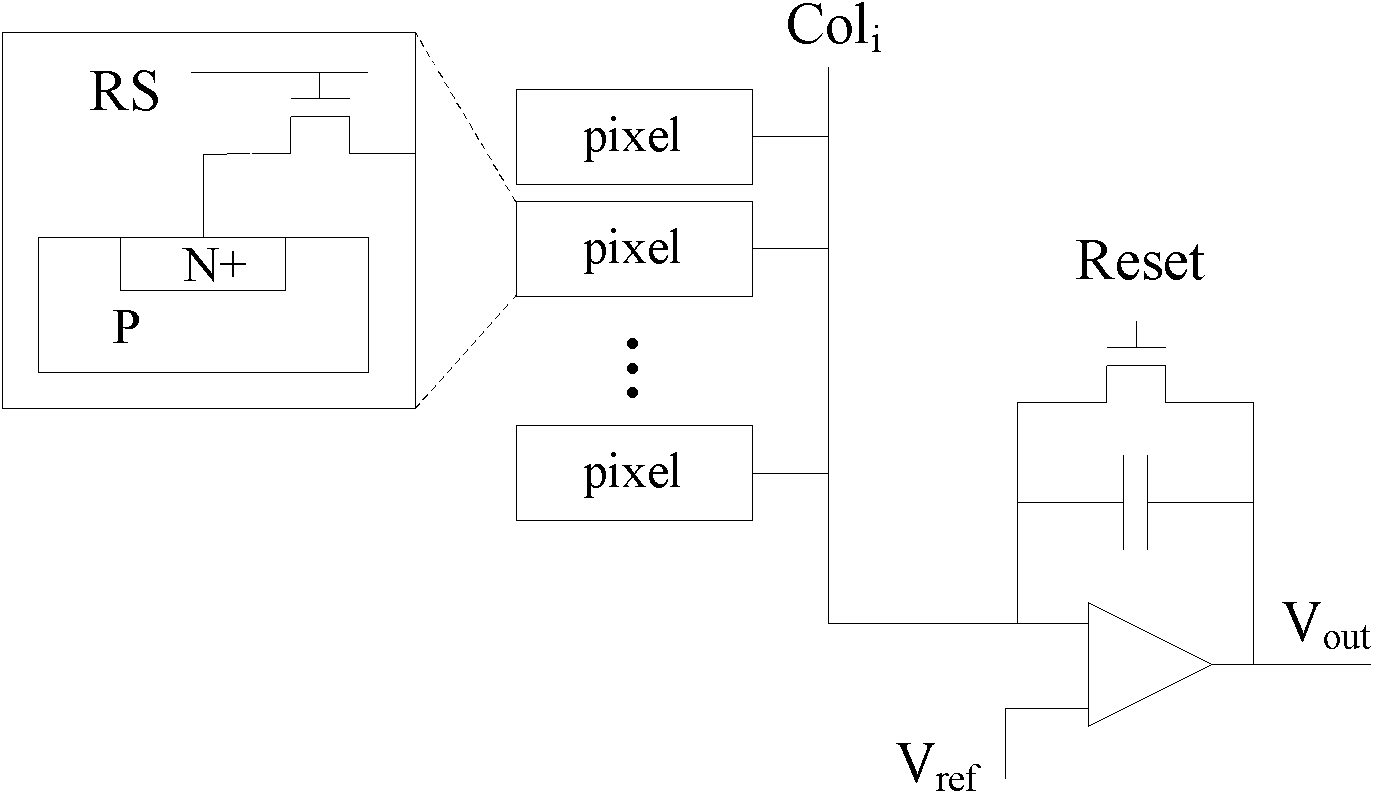CMOS image sensor
A technology of image sensor and photosensitive device, which is applied in image communication, TV, color TV components and other directions, can solve the problems of small fill factor, complicated circuit, and complicated logic of image sensor, so as to improve the dynamic range and improve the shooting frame rate. , the effect of increasing the frame rate
- Summary
- Abstract
- Description
- Claims
- Application Information
AI Technical Summary
Problems solved by technology
Method used
Image
Examples
Embodiment 1
[0035] See image 3 As shown in the figure, the present invention provides a CMOS image sensor connected to an external light intensity detection device preset with a light intensity threshold. The CMOS image sensor at least includes: a photosensitive device for converting light signals into signals Charge, the photosensitive device is a photodiode or a light gate, wherein the photodiode is a PN junction photodiode or a Pinned photodiode. In this embodiment, the photosensitive device adopts a photodiode (PD) 23, the positive terminal of the photodiode (PD) 23 is grounded, and the negative terminal is connected to the first capacitor (FD) 25. The dual-mode readout circuit, connected to the photodiode (PD) 23, includes a first capacitor (FD) 25, the first end of which is connected to the output end of the photodiode (PD) 23, and the second end is grounded, Used to store the signal charge generated by the photodiode (PD) 23; a first transistor (VPPS) 27, the first transistor (VPPS...
Embodiment 2
[0042] See image 3 , As shown in the figure, the basic circuit of the CMOS sensor in this embodiment is as in embodiment 1.
[0043] See Figure 4b As shown in the figure, specifically, the CMOS sensor includes shallow trench isolation trenches 21' formed at both ends of the P-type substrate 1', and the third transistor (GS) 22' is used to implement the shutter function, and its source The drains are all formed in the P-type substrate 1', the gate 222' is located between the source and the drain and is formed on the surface of the P-type substrate 1', the drain 221' is connected to a DC power source, and the gate 222' is connected to a shutter device; the photodiode (PD) 23' is formed in the P-type substrate 1', adopts a Pinned structure and is connected to the source of the third transistor (GS) 22', for connecting The light signal is converted into signal charge; the source and drain of the transfer transistor (TX) 24' are formed in the P-type substrate 1', and the gate 241' ...
PUM
 Login to View More
Login to View More Abstract
Description
Claims
Application Information
 Login to View More
Login to View More - R&D
- Intellectual Property
- Life Sciences
- Materials
- Tech Scout
- Unparalleled Data Quality
- Higher Quality Content
- 60% Fewer Hallucinations
Browse by: Latest US Patents, China's latest patents, Technical Efficacy Thesaurus, Application Domain, Technology Topic, Popular Technical Reports.
© 2025 PatSnap. All rights reserved.Legal|Privacy policy|Modern Slavery Act Transparency Statement|Sitemap|About US| Contact US: help@patsnap.com



